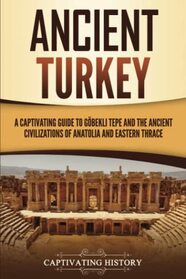Modern Turkey comprises two separate areas - Anatolia and Eastern Thrace. Anatolia was the Asian part of the region, while Eastern Thrace was the European part. The Romans conquered both areas and united them. At one time, Turkey was part of the Byzantine Empire. After that, Turkey belonged to the Seljuk dynasty and the Ottoman Empire. Later, it became the Republic of Turkey.
Archeologists have been surprised to find artifacts as old as 8000 BCE in Anatolia. They had found evidence of man before people began working with metal to make tools. Because people had no written language at this point, scientists had to piece together evidence and artifacts to create the story of early Anatolia. Life in ancient Anatolia changed with the discovery of and use of metallurgy. By 610 BCE, the Lydians were minting gold and silver coins for trade. In their time, the Phrygians built an extensive road system used by other cultures after their collapse.
Gods and myths were shared and absorbed by varying cultures across Anatolia. This book gives a good overview of the gods and legends of the region. The final chapter covers important rulers and emperors of the Anatolian region during ancient times. Anatolian kings and rulers of ancient times had to be great warriors and benevolent rulers at home. The Anatolians were great artists who left behind pieces of art to identify their civilizations that tell stories of their gods, heroes, and monsters.
Archeologists have been surprised to find artifacts as old as 8000 BCE in Anatolia. They had found evidence of man before people began working with metal to make tools. Because people had no written language at this point, scientists had to piece together evidence and artifacts to create the story of early Anatolia. Life in ancient Anatolia changed with the discovery of and use of metallurgy. By 610 BCE, the Lydians were minting gold and silver coins for trade. In their time, the Phrygians built an extensive road system used by other cultures after their collapse.
Gods and myths were shared and absorbed by varying cultures across Anatolia. This book gives a good overview of the gods and legends of the region. The final chapter covers important rulers and emperors of the Anatolian region during ancient times. Anatolian kings and rulers of ancient times had to be great warriors and benevolent rulers at home. The Anatolians were great artists who left behind pieces of art to identify their civilizations that tell stories of their gods, heroes, and monsters.




